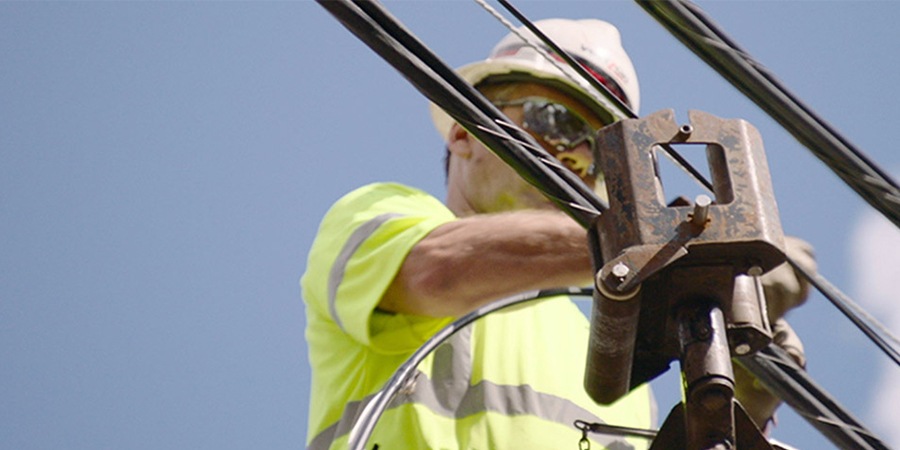Verizon now connects nearly 48% of its cell sites with its own deployed fiber optic cables and is on track to reach about 50% by the end of this year, allowing Verizon wireless customers to take full advantage of Verizon’s peak speeds and robust service offerings. Verizon’s fiber network is the largely invisible foundation that is a key driving force behind providing the reliability and scalability customers need and expect. It is the connective tissue that ties the disparate pieces of the network together and transfers data between a customer and the internet.
If networks are the oxygen of the digital era, fiber optic cables would be its central nervous system. Fiber networks play a largely unseen, but essential role in connectivity, enabling ultra-high capacity, speed and low latency data transfer for 4G LTE and 5G networks. Equally unheralded is fiber’s role as the backbone of IP and virtualized networks that streamline operations, reduce operating costs and improve agility for network providers, businesses and consumers alike.
Verizon embarked on a multi-year journey to deploy tens of thousands of miles of fiber with the goal of providing backhaul fiber connection to about 50% of its cell sites by the end of 2022. Owning and operating the fiber that carries customer data from the cell site throughout the rest of the network allows the company to meet changing capacity needs rapidly, control upgrades and repairs to fiber cables and electronics immediately, as well as add security, control and reliability into network operations -- all critical to create the most reliable network for customers and provide the capacity and speeds needed now and into the future.
Phones, home broadband, the Internet, voice-activated virtual assistants, video streaming, smart-anything – none of it could run without millions of miles of these high-speed conduits crisscrossing the globe. The hottest new wireless technologies and applications largely depend on fiber optics, including 5G, IP, Big Data predictive analytics and Artificial Intelligence (AI), IoT, super-fast mobile Internet, Edge networks and many more. Only fiber can meet skyrocketing user demands for fast, efficient bandwidth while providing the huge capacity and ultra-quick response times needed to power 4G LTE and 5G networks. Fiber provides the connectivity for 4G LTE small cell expansion and gigabit backhaul for 5G wireless networks. In addition, fiber is critical for FTTP (fiber to the premise/home/office) services for consumers and enterprises, IoT and smart city offerings. The Verizon infrastructure also provides the foundation for significant FTTP access. 4G Home, 5G Home, FIOS home, FIOS Business Internet, 4G Business Internet, 5G Business Internet and private fiber circuits with enterprise service level agreements are some of the fixed broadband access offerings available to consumers and businesses that depend on Verizon’s extensive and growing fiber footprint.
Growing fiber capacity
Not only has Verizon deployed fiber that now serves 48% of its cell sites, it is significantly increasing the capacity that the fiber network can manage. In June of this year, Verizon announced that data traffic on its 5G Ultra Wideband network had already increased 249%, and it expects continued increases as more customers adopt the new technology and begin to experience the robust capabilities and performance of 5G Ultra Wideband.
To meet that growing demand, Verizon is supercharging the core of its fiber network by upgrading older router equipment with new equipment, capable of utilizing the latest 400 Gbps per port optical technology. When the overhaul of the fiber core network (the superhighway Verizon uses to move customers’ data) is complete, Verizon will be able to manage 115 Tbps of data, the equivalent of almost 24 billion streaming songs, at any given moment. This equipment will be upgradeable to 230 Tbps in the coming years, providing scalability and increased reliability in its service. This upgrade will significantly increase the bandwidth needed to support wireless, home internet, enterprise, small business and FIOS customers.































